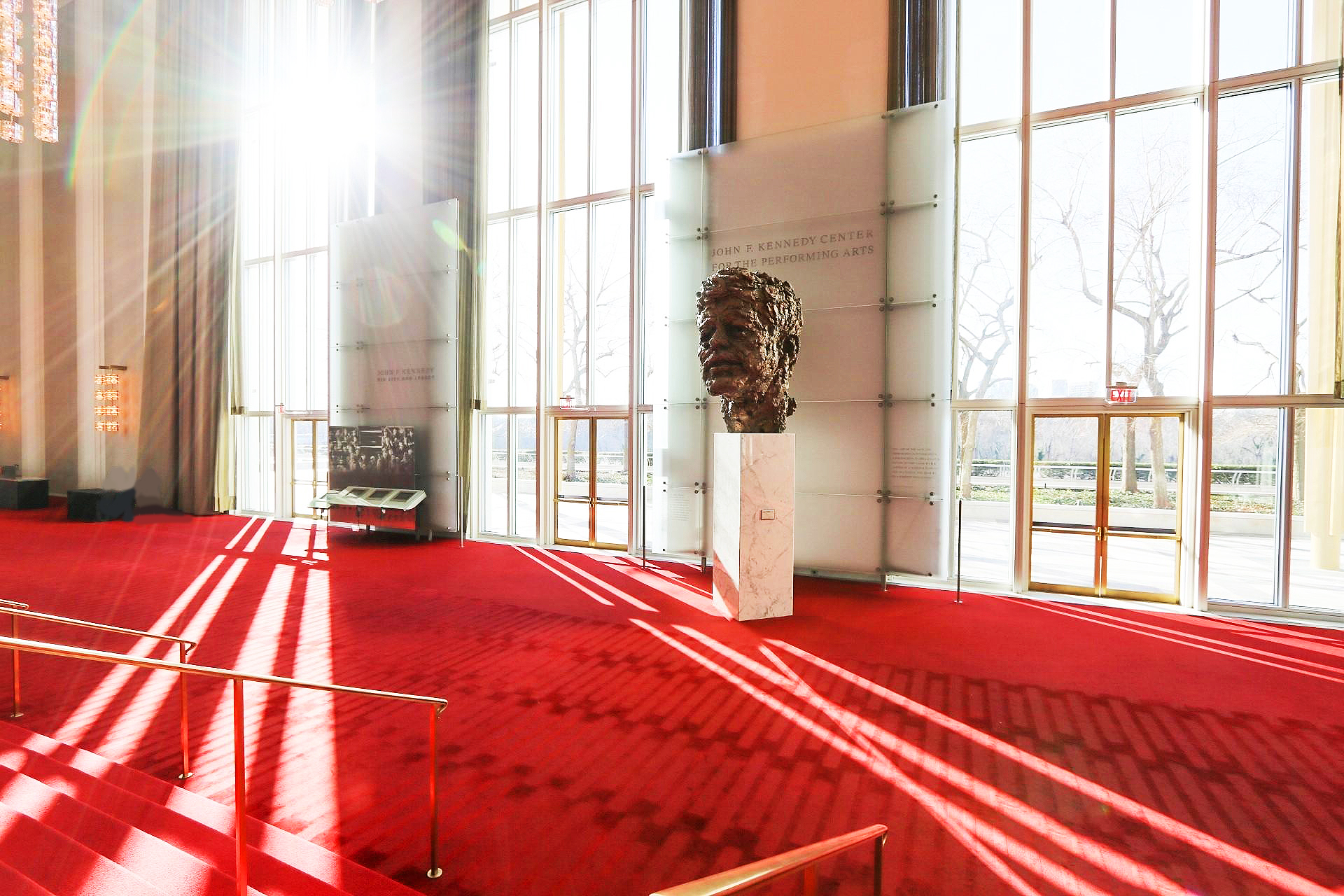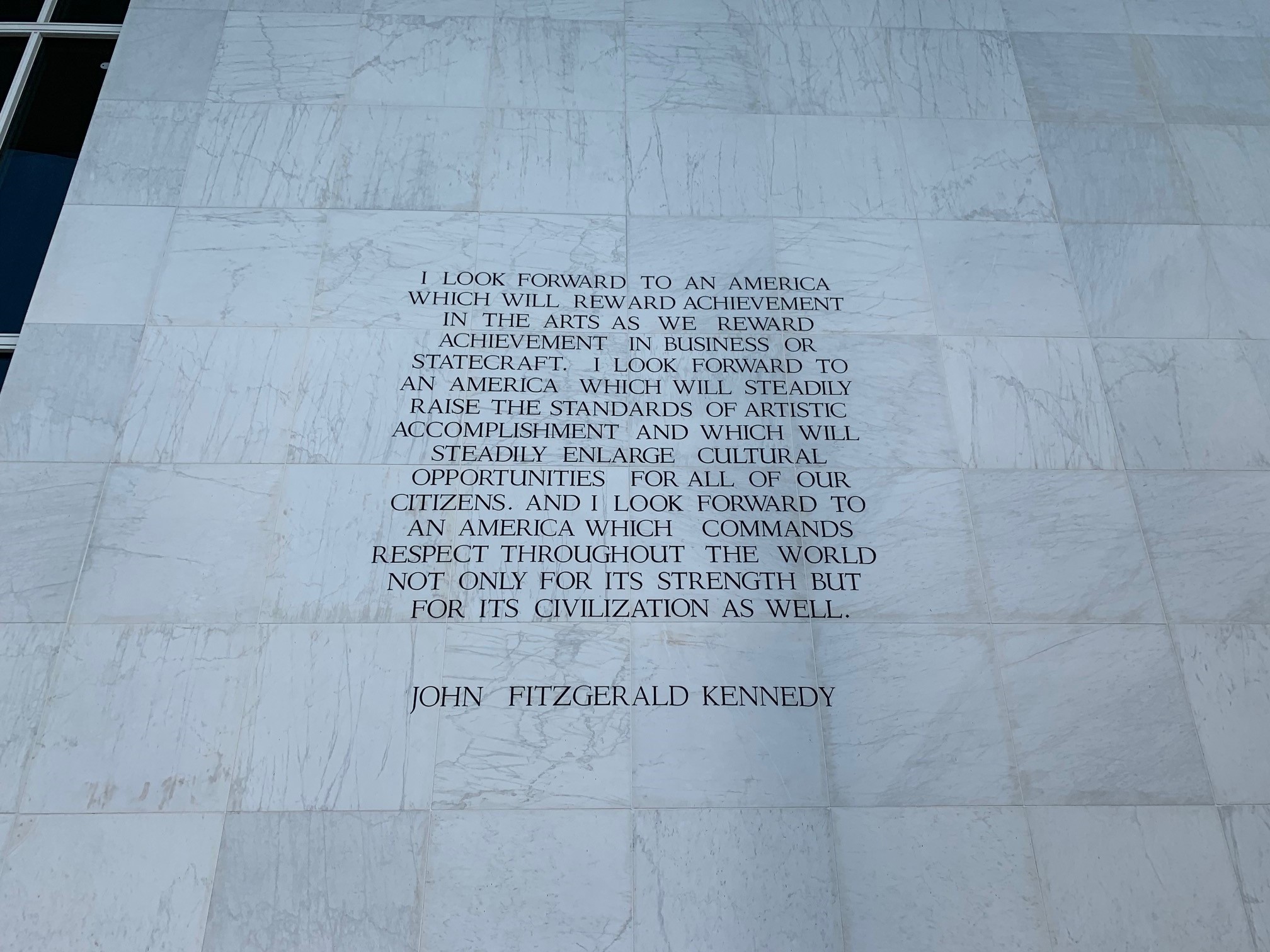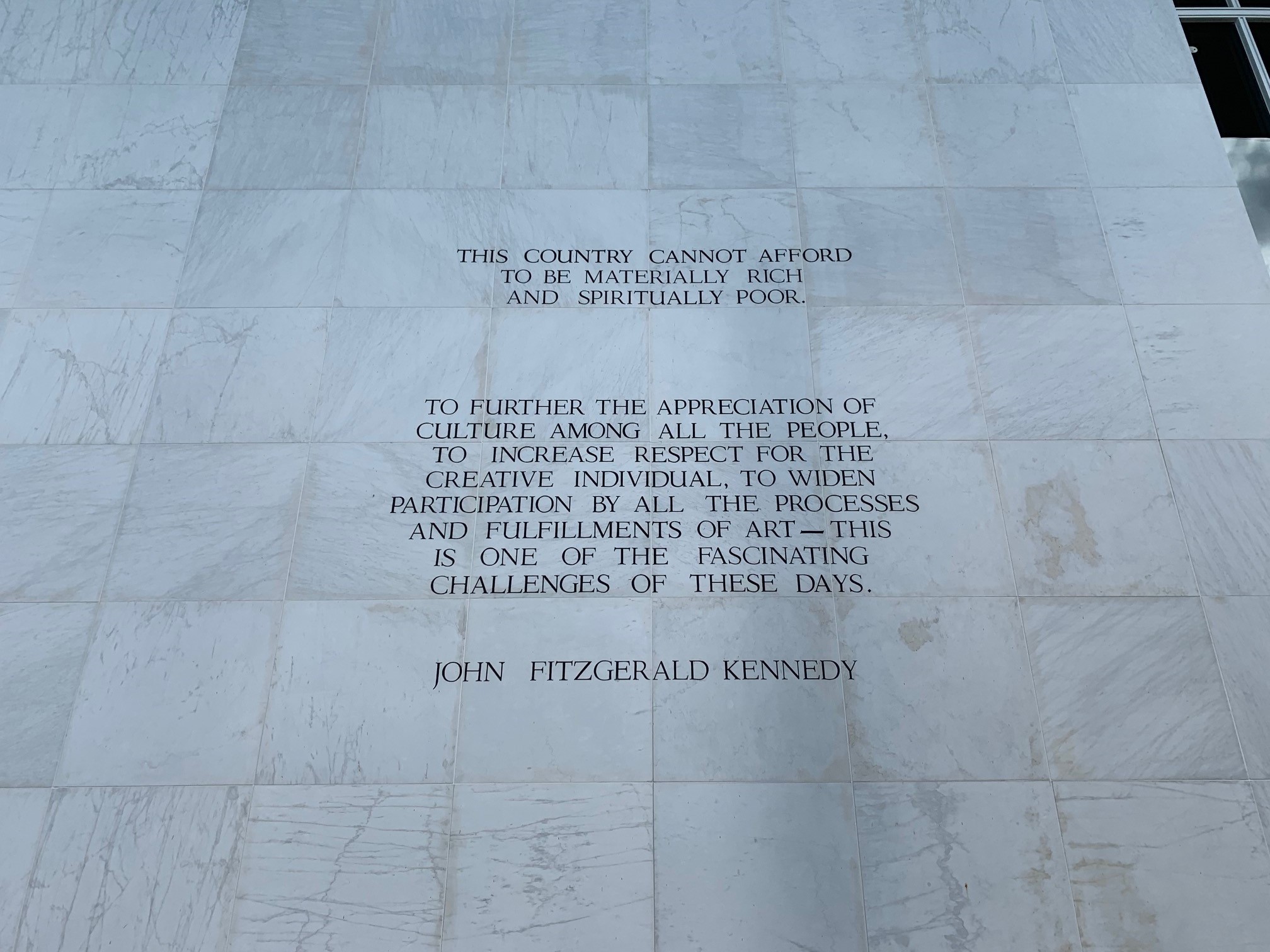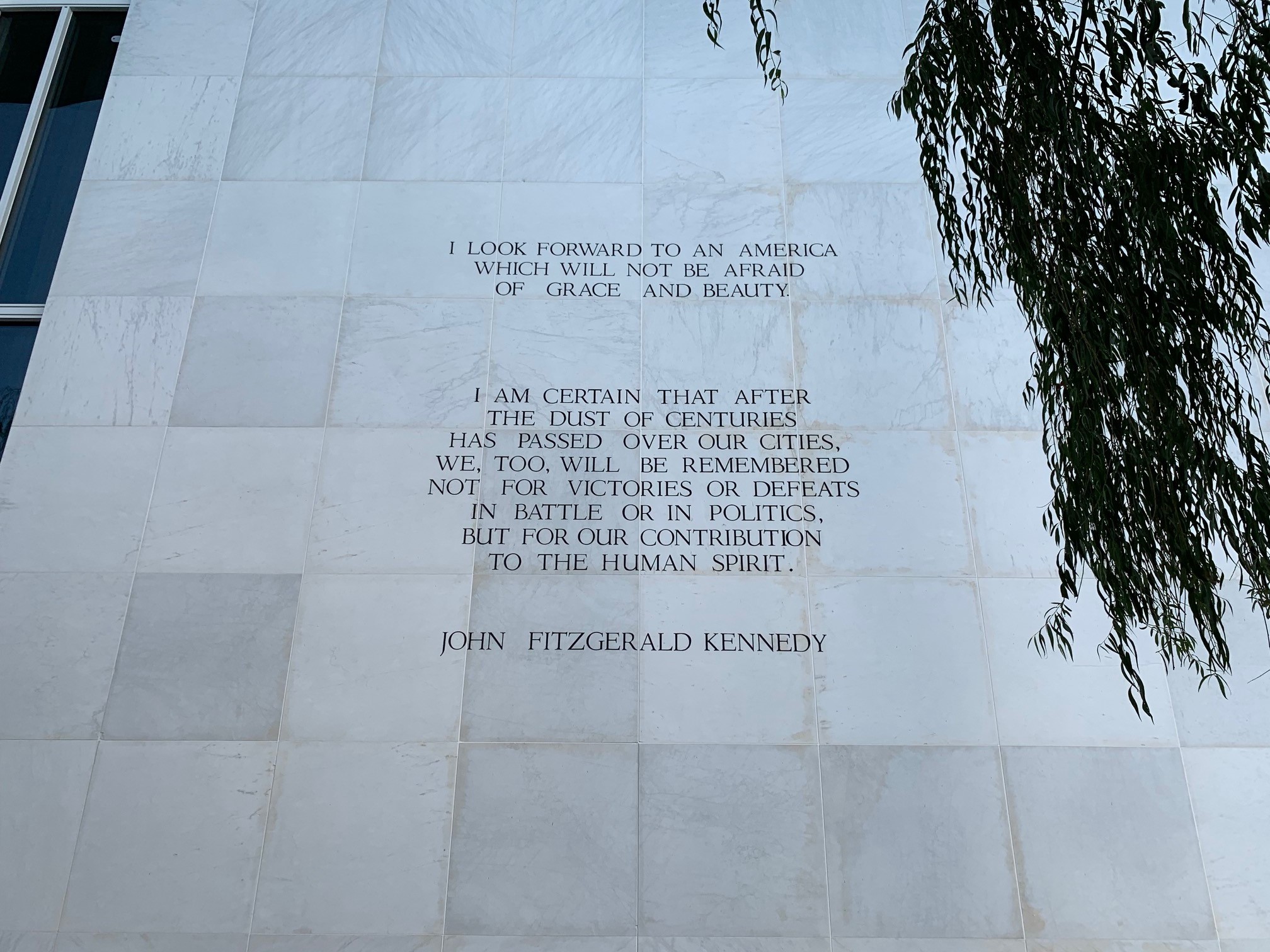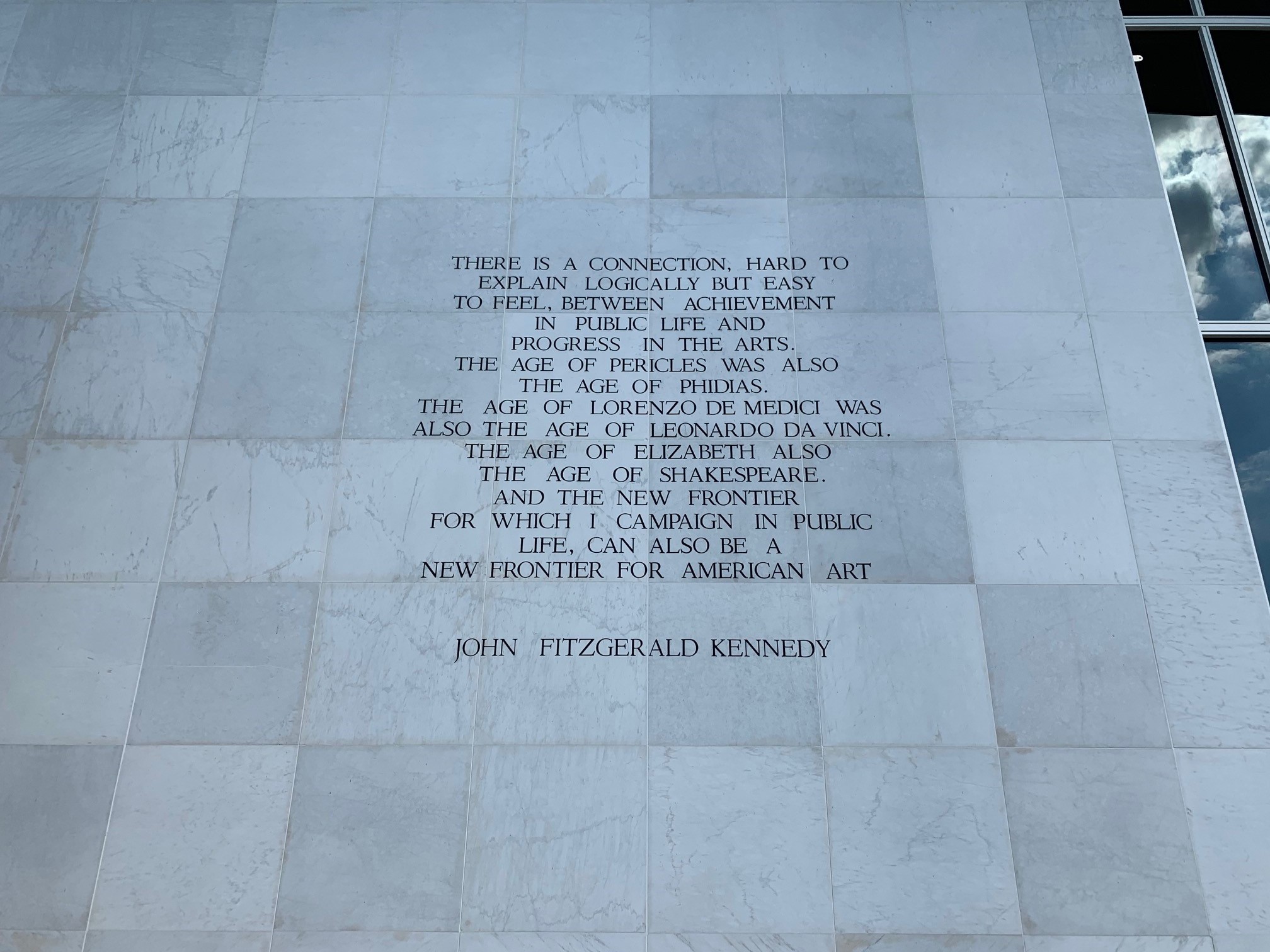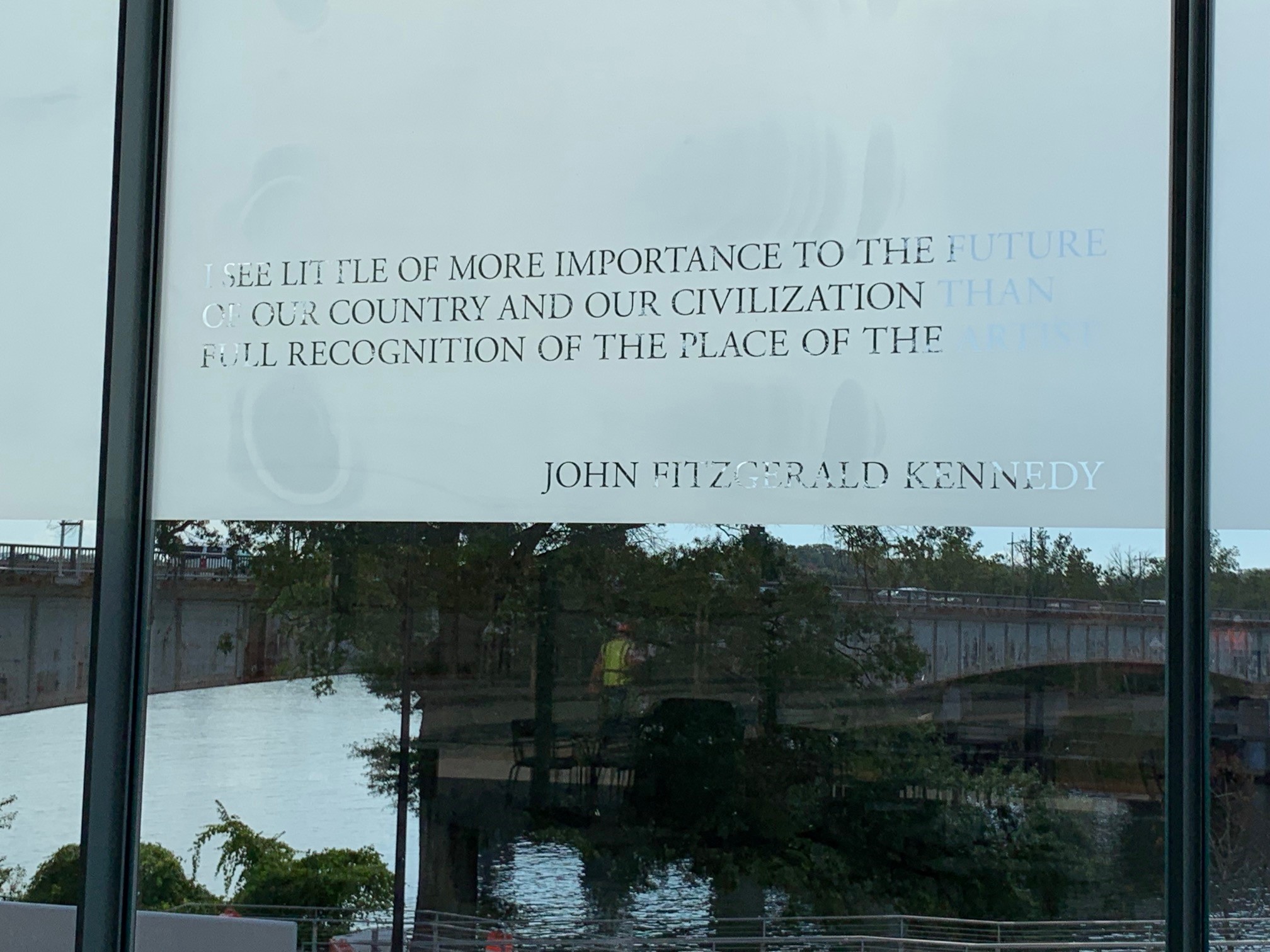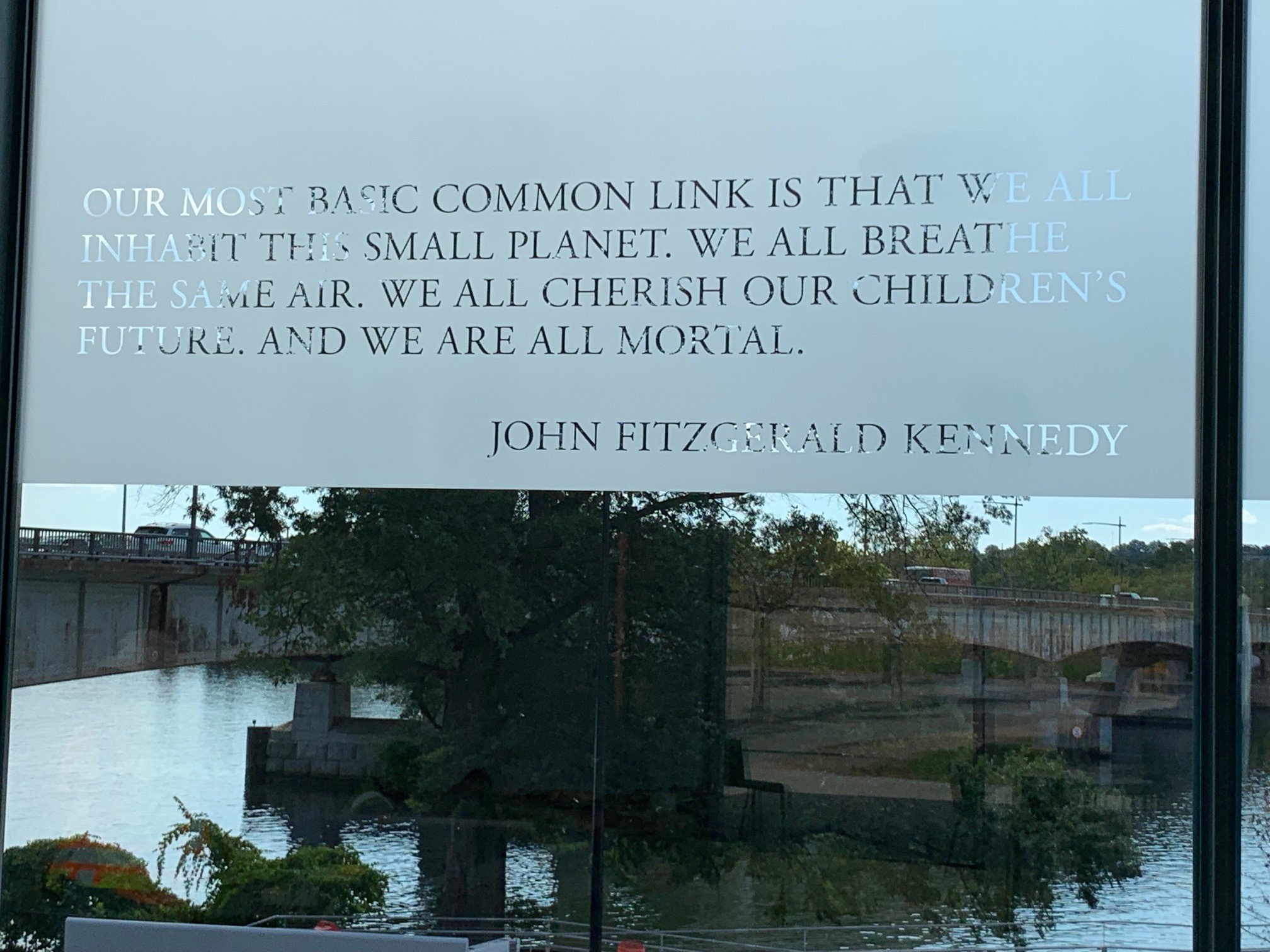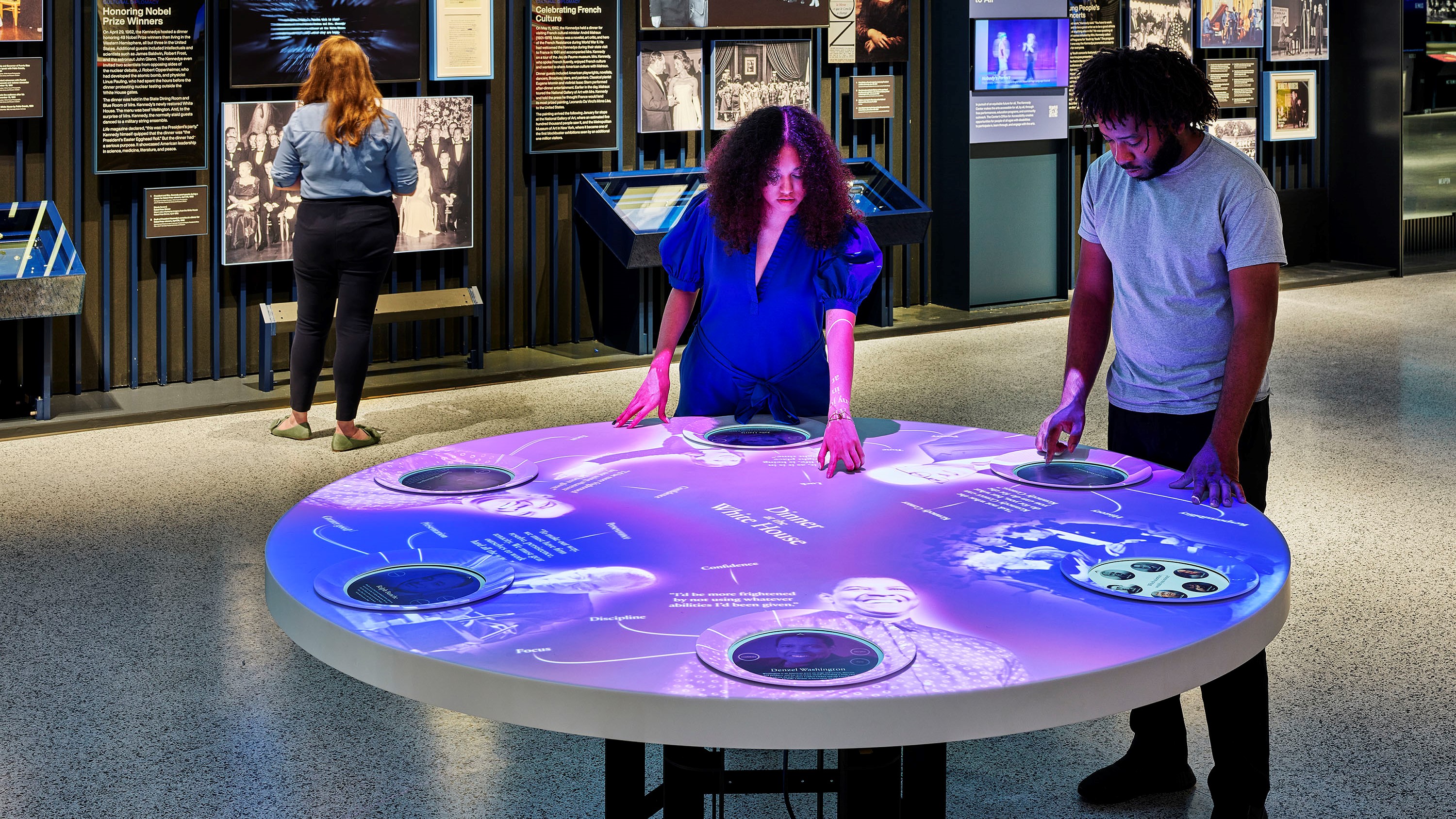A Living Memorial
free daily admission 10 a.m. to midnight
Art and Ideals: President John F. Kennedy is a major permanent exhibit in the massive roof-level JFK Gallery that explores Kennedy’s appreciation and promotion of the arts and why the Kennedy Center came to be the living memorial to him and his ideals.
Washington D.C. hosts many memorials to past presidents. But only one comes alive with over 2,000 events a year: The John F. Kennedy Center for the Performing Arts.
Remembering President Kennedy
We mark with reverence the 60th anniversary of the death of President John F. Kennedy with a performance of Barber’s Adagio for Strings.
“The life of the arts…is very close to the center of a nation’s purpose” – JFK
“...ask what you should do for your country.”
These clips demonstrate why President Kennedy is considered one of the ’¼ünest orators in modern history to reside at 1600 Pennsylvania Avenue. Witness these iconic moments that have reverberated throughout history.
Art Knows No National Boundaries
Art Knows No National Boundaries
He was a statesman who recognized that culture and art are the true hallmarks of a ’¼éourishing society.
In this televised speech from 1962, President Kennedy eloquently explains the power of art to build “bridges between peoples” reminding us “that the forces that unite are deeper than those that divide."
President Kennedy's Full Inaugural Address
President Kennedy's Full Inaugural Address
"Ich Bin Ein Berliner"
"Ich Bin Ein Berliner"
Nuclear Test Ban Treaty
Nuclear Test Ban Treaty
Ask Not What Your Country Can Do For You
Ask Not What Your Country Can Do For You
Who Was JFK?
Who Was JFK?
No one expected him to become president. He had too much stacked against him. His religion. His youth. His background.
But John F. Kennedy never balked in the face of struggle. His un’¼éagging spirit carried him to the White House, and to one of the most iconic presidencies in the history of our nation. This exclusive ’¼ülm tells that story.
Who Was JFK?
No one expected him to become president. He had too much stacked against him. His religion. His youth. His background.
But John F. Kennedy never balked in the face of struggle. His un’¼éagging spirit carried him to the White House, and to one of the most iconic presidencies in the history of our nation. This exclusive ’¼ülm tells that story.
“We must be bold.”
It was President Kennedy’s boldness that led us to do something humans have considered ever since they walked upright: travel 238,900 miles through the darkness of space to walk on the surface of the moon.
In Houston, Texas, on September 12, 1962, President Kennedy declared, “We choose to go to the moon in this decade and do the other things, not because they are easy, but because they are hard, because that goal will serve to organize and measure the best of our energies and skills, because that challenge is one that we are willing to accept, one we are unwilling to postpone, and one which we intend to win.”
Fewer than seven years later, on July 20, 1969, Neil Armstrong made good on President Kennedy’s promise when he became the ’¼ürst person to set foot on the moon.
Shooting for the Moon
Shooting for the Moon
Speech to Congress
Speech to Congress
Peace Corps Video
ŌĆ£Our desire to live in peace, our desire to be of help.ŌĆØ
At the height of the Cold War, President Kennedy had the vision to found a new organization dedicated to peace: the Peace Corps, a global service organization, sta’¼Ćed by young people. This revolutionary enterprise combined the ideals of service and cultural exchange, and transformed the lives of countless people.
Civil Rights
ŌĆ£A great change is at hand.ŌĆØ
For President Kennedy, the battle to grant civil rights to African-Americans wasn’t simply a moral struggle, it was a legal necessity and a constitutional imperative. He used all his political will to create the legislation to end the legal practices of segregation.
After his assassination on November 22, 1963, his successor, President Johnson, secured the passage of the Civil Rights Act of 1964.
ŌĆ£A great change is at hand.ŌĆØ
For President Kennedy, the battle to grant civil rights to African-Americans wasn’t simply a moral struggle, it was a legal necessity and a constitutional imperative. He used all his political will to create the legislation to end the legal practices of segregation.
After his assassination on November 22, 1963, his successor, President Johnson, secured the passage of the Civil Rights Act of 1964.
